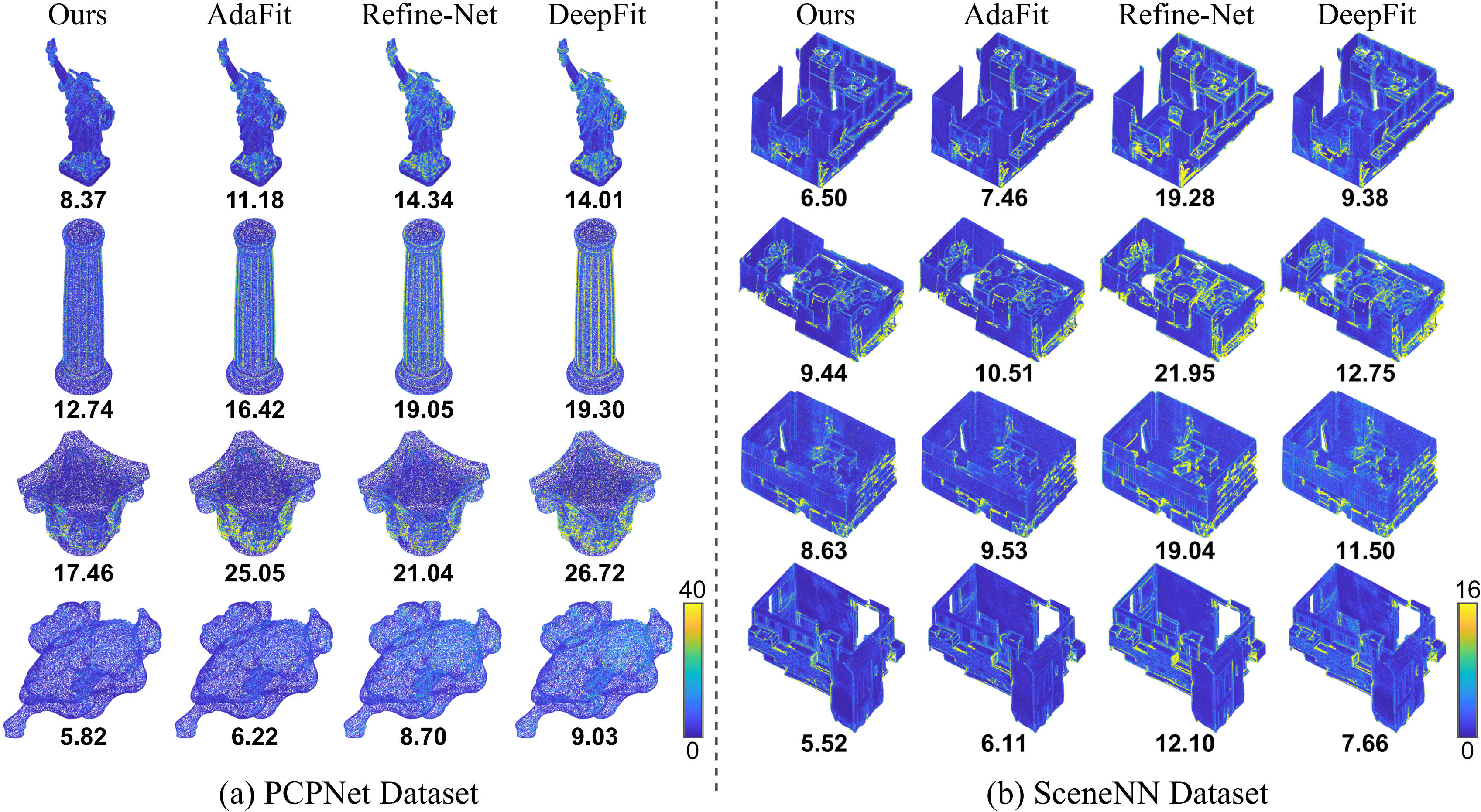

We propose a novel normal estimation method called HSurf-Net, which can accurately predict normals from point clouds with noise and density variations. Previous methods focus on learning point weights to fit neighborhoods into a geometric surface approximated by a polynomial function with a predefined order, based on which normals are estimated. However, fitting surfaces explicitly from raw point clouds suffers from overfitting or underfitting issues caused by inappropriate polynomial orders and outliers, which significantly limits the performance of existing methods. To address these issues, we introduce hyper surface fitting to implicitly learn hyper surfaces, which are represented by multi-layer perceptron (MLP) layers that take point features as input and output surface patterns in a high dimensional feature space. We introduce a novel space transformation module, which consists of a sequence of local aggregation layers and global shift layers, to learn an optimal feature space, and a relative position encoding module to effectively convert point clouds into the learned feature space. Our model learns hyper surfaces from the noise-less features and directly predicts normal vectors. We jointly optimize the MLP weights and module parameters in a data-driven manner to make the model adaptively find the most suitable surface pattern for various points. Experimental results show that our HSurf-Net achieves the state-of-the-art performance on the synthetic shape dataset, the real-world indoor and outdoor scene datasets.

The architecture of HSurf-Net for point cloud normal estimation. The Space Transformation module extracts a global location code G for each point. The local frames are formulated at point pi based on spatial coordinates and are used to compute a condition code C by a Relative Position Encoding module. Then, we perform the hyper surface fitting in a high dimensional feature space. Finally, we recover the 3D normal vectors from fitting results by an Output Module.



| Object | Scene |
|---|---|
|
|
|
@inproceedings{li2022hsurf,
title = {{HSurf-Net}: Normal Estimation for {3D} Point Clouds by Learning Hyper Surfaces},
author = {Li, Qing and Liu, Yu-Shen and Cheng, Jin-San and Wang, Cheng and Fang, Yi and Han, Zhizhong},
booktitle = {Advances in Neural Information Processing Systems (NeurIPS)},
publisher = {Curran Associates, Inc.},
pages = {4218-4230},
volume = {35},
year = {2022},
url = {https://proceedings.neurips.cc/paper_files/paper/2022/hash/1b115b1feab2198dd0881c57b869ddb7-Abstract-Conference.html},
}